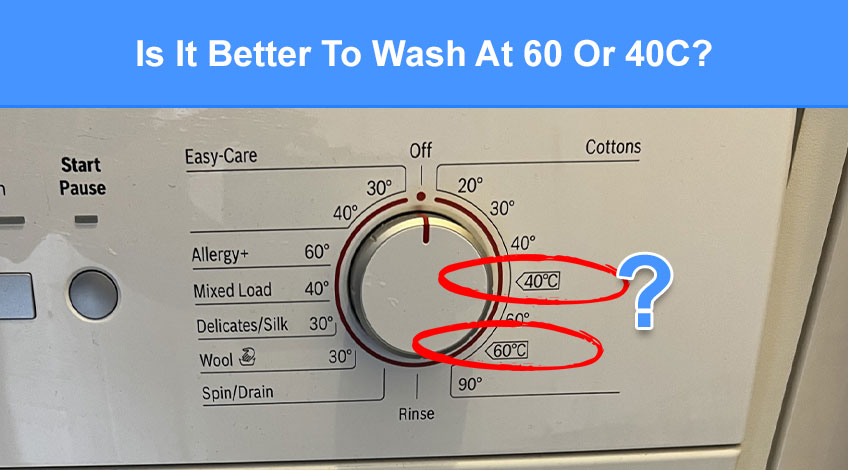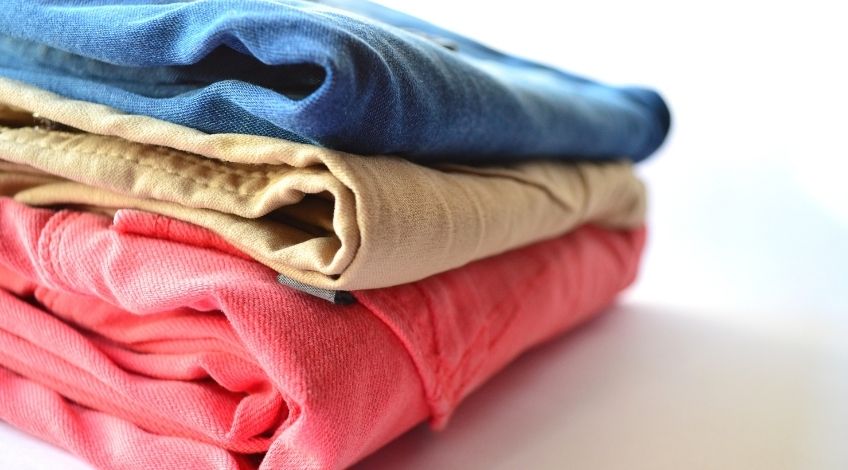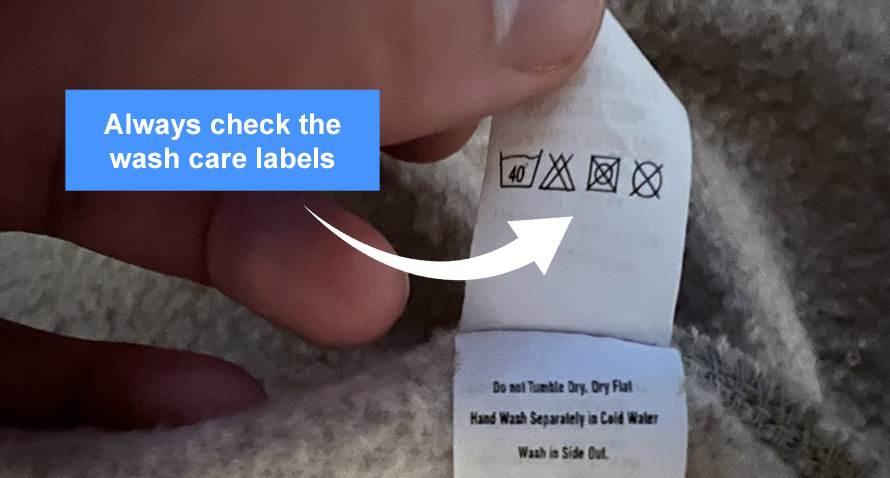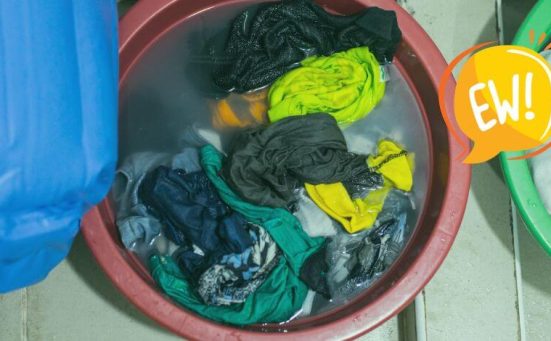
Is It Better To Wash At 60 Or 40C? (with examples)
One way we can reduce our energy bills and our carbon footprint is by reducing the temperature that we wash our clothes at. But is it better to wash clothes at 60 or 40 degrees C?
We all have preconceived ideas about which temperature is best for getting our clothes clean. But the facts might just surprise you.
What Makes Using The Right Temperature So Important?
To ensure that our clothes are clean and bacteria free we need to wash them at the right temperature. We also need to be mindful of the effect any given temperature can have on those clothes.
The cost of clothes has increased significantly in recent years which means we need to care for them as best we can. Which is why it is vitally important that we wash our clothes at the correct temperature.

Why Use 40 Degrees To Wash Clothes?
The 40 degree wash cycle is considered to be a warm wash. This is the midway point between a cool wash and a hot wash. Which means a 40 degree wash strikes a balance between preserving the condition of the clothes and getting them hygienically clean.
The Benefits Of Washing Clothes At 40 Degrees C
There are several benefits to washing clothes at 40 degrees C which include;
- Great For Washing Denim
Denim is considered to be a robust fabric but the reality is that denim is likely to shrink if washed at high temperatures. 40 degrees is the perfect temperature to wash denim clothes at. - Clothes Are Less Likely To Shrink
Many fabrics including denim and cotton are likely to shrink if exposed to temperatures that are too high. 40 degrees ensures the clothes get clean without causing the fibres to contract which leads to shrinkage. - Colours Are Less Likely To Fade
Many dark or coloured clothes are far more likely to fade due to colour run at high temperatures. It is recommended that coloured towels are washed at 40 degrees. - Suitable For Many Fabrics
The 40 degree wash cycle is suitable for a wide range of fabrics including; Cotton, denim, wool and many synthetics. - Saves Energy (compared to a 60 degree wash)
Washing clothes at 40 degrees will save a considerable amount of energy compared to a 60 degree wash cycle. - Prevents Clothes Wearing Out
Fabrics are less likely to wear out if washed at 40 degrees compared to clothes washed at 60 degrees. This is because the heat can damage fibres,causing threads to break and tear at higher temperatures. - Better For Removing Certain Stains
There are some stains that actually get set at high temperatures and are best removed at 40 degrees. These include; Blood, milk and dairy based stains.
The Disadvantages Of Washing Clothes At 40 Degrees C
The main disadvantages of washing clothes at 40 degrees include;
- Doesn’t Remove All Germs & Bacteria
There are several germs and bacteria that can withstand a 40 degree wash cycle. You can remove them using a 40 degree wash as long as you use a decent detergent as well as a laundry sanitiser. - Doesn’t Remove All Stains
Many ingrained stains will need hotter water to remove them. Or you could pretreat or pre-soak the clothes before washing at 40 degrees.

Why Use 60 Degrees To Wash Clothes?
With the advances in washing machine technology in recent years, there are more and more clothes that can be washed at lower temperatures. However, there are certain items that will still benefit from a 60 degree wash.
The Benefits Of Washing Clothes At 60 Degrees C
There are several benefits to washing clothes at 60 degrees which include;
- Better For Keeping Whites White
Brilliant white garments can keep their brilliance if washed at 60 degrees. This is of course dependent on the fabric having the ability to withstand such a high wash temperature. - Better For Stubborn Stain Removal
If the fabric can withstand it, a 60 degree wash is great for removing stubborn stains and oils, grease etc from clothes without the need to pretreat them first. - Better At Removing Bacteria
The NHS recommends washing items such as bedding, underwear and towels and any other items that come into direct contact with the skin at 60 degrees to remove germs and bacteria.
The Disadvantages Of Washing Clothes At 60 Degrees C
The disadvantages of washing clothes at 60 degrees include;
- Clothes Are More Prone To Shrinking
There are certain fabrics like wool and some cottons that are likely to shrink if washed at 60 degrees. - Some Stains Will Become Set
Stains like blood, milk and dairy based stains are likely to get cooked into the fabric at 60 degrees. - Uses More Energy
A 60 degree wash uses far more electricity than a 40 degree wash cycle. - Costs More
The more electricity the wash uses, the more it will cost to run. - Not So Good For The Environment
As a 60 degree wash uses more electricity, it is not as environmentally friendly as a 40 degree wash cycle.
What Should Be Washed At 40 Degrees C?
You should wash the following at 40 degrees C;
- Cotton
Many cotton items would shrink at 60 degrees so you should always choose a 40 degree wash over a 60 degree wash for dirty cotton items. - Synthetics
Man made synthetic materials should be washed at the lowest possible temperatures to maintain the integrity of the fabric. If synthetics are very dirty and the care label allows it, you should wash them at 40 degrees. - Denim
40 degrees is the optimum temperature for washing denim clothes. It is hot enough to remove many stains, but cool enough to prevent shrinkage. - Dark & Coloured Clothes
Any clothes that are likely to fade or their colours run should be washed at 40 rather than 60 degrees.
What Should Be Washed At 60 Degrees C?
You should wash the following at 60 degrees C;
- Towels
In particular white towels should be washed at 60 to remove bacteria, germs and stains. - Underwear
Cotton underwear should be washed at 60 degrees to remove germs & bacteria. - Heavily Soiled Items
Many items that are heavily soiled, that can withstand a 60 degree wash, will wash clean.
What Does The Care Label Tell You?

The wash care label is there to advise you on the best way to wash and dry your clothes to keep them in the best condition possible. The guide uses symbols to show how to wash your clothes.
You need to look out for a bucket symbol with water in and a number. That number indicates the temperature that is recommended to wash that garment at.
For instance a 40 in the symbol indicates that the item should be washed at 40 degrees C. If the number was 60 that would indicate the item should be washed at 60 degrees C and so on.
40 Vs 60 Degrees; Which Is Best?
For general wash loads of cottons, synthetics and lightly soiled clothes, a 40 degree wash cycle is ideal. On the other hand for towels, underwear and heavily stained items, a 60 degree wash would be better.
You need to be mindful of the fabrics you’re washing, delicate fabrics cannot generally withstand high temperatures. In which case you should also question whether 40 degrees is too much.
Always consult the wash care label and stick to the guidelines.
SEE ALSO: Is 30 Degrees A “Cold Wash”? (when & how to use it)
Frequently Asked Questions
You should always consult the wash care label to determine what temperature is best for washing your clothes. A 40 degree wash is best for many fabrics to clean and remove stains. However, there are some germs and bacteria that can withstand a 40 degree wash and will need to be subjected to 60 degrees to kill them.
If you wash clothes at 60 degrees that should be washed at 40, you run the risk of causing the fabrics to shrink. Materials like cotton and wool are likely to shrink at 60 degrees.
Ideally, you should use a 90 degree wash to clean the washing machine. 60 degrees will remove some germs and bacteria but many mould and mildew spores can only be removed at 90 degrees.
Also, follow us on Pinterest ...



